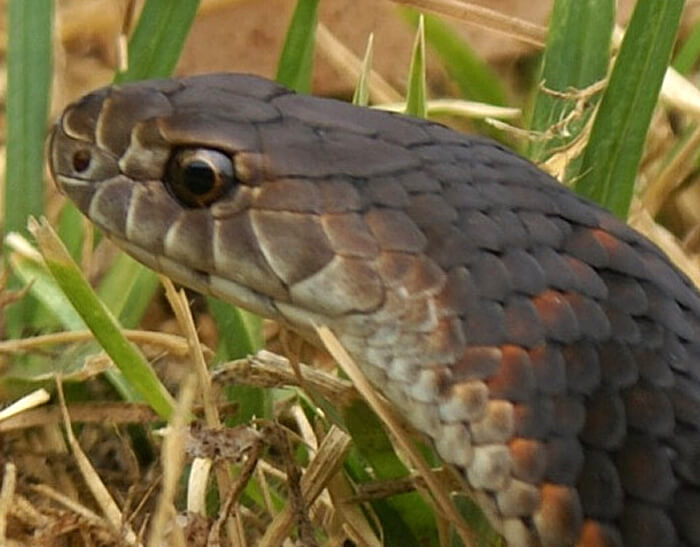Introduction
Snake attacks are a serious medical emergency situation that can take place in various atmospheres, especially in regions where snakes are prevalent. In Australia alone, there are baby dugite many species of poisonous snakes such as the Tiger Serpent, Eastern Brown Snake, and King Brown Serpent. Comprehending how to properly take care of serpent bites is essential for anybody who hangs out outdoors or lives in rural areas. This short article will certainly explore detailed emergency treatment administration approaches for serpent attacks and outline best techniques for responding Click for info to these incidents.
First Help Monitoring of Snake Bites: Ideal Practices for each Situation
When handling a serpent bite, the initial feedback can considerably affect the victim's result. Immediate action is critical because swift clinical treatment usually determines the degree of injury or survival price. Below are essential first aid concepts to remember:
Stay Calm: The primary step in handling a serpent bite is to stay calm. Panic can raise heart prices and raise the spread of poison throughout the body. Call for Help: Dial emergency solutions right away. Offer them with your place and any type of information concerning the snake if possible. Keep the Sufferer Still: Urge the sufferer to remain as still as possible. Activity can enhance blood circulation, speeding up venom absorption into the bloodstream. Positioning: If feasible, position the affected arm or leg at or below heart level. This positioning aids reduce venom spread. Remove Tight Clothing: Loosen up any type of garments or fashion jewelry around the bite site; swelling might happen rapidly after a snake bite. Do Not Use Ice/Cold Packs: As opposed to popular belief, applying ice can intensify cells damage and must be avoided.Understanding Snake Variety and Their Habitats
Tiger Snakes and Their Habitat
Tiger serpents (Notechis scutatus) are amongst Australia's the majority of well-known poisonous serpents as a result of their aggressive nature and powerful venom.
- Habitat: They generally occupy seaside regions, marshes, and areas with thick vegetation like marshes and swamps. Risks: Recognition of local tiger serpent habitats can reduce the risk of experiencing one unexpectedly.
Eastern Brown Snakes: A Significant Threat
The Eastern Brown Serpent (Pseudonaja textilis) is another highly venomous species discovered throughout eastern Australia.
- Habitat: This serpent prospers in urban locations, agricultural lands, and grasslands. Behavior: Understood for its fast strikes when endangered, understanding its behavior might assist minimize encounters.
Recognizing Symptoms of Snake Bites
Identifying signs and symptoms at an early stage can boost chances of efficient treatment:
Local Symptoms:
- Pain and swelling around the bite site Discoloration or bruising
- Nausea or vomiting Difficulty breathing Signs of shock (e.g., pale skin, rapid heart beat)
First Aid Protocols for Specific Serpent Bites
First Help for Tiger Serpent Bite
In instance of a tiger snake bite:
Stay calm; maintain still. Call emergency situation solutions immediately. Immobilize the influenced arm or leg using a splint if available. Do not try to suck out venom or apply ice.First Aid for Eastern Brown Snake Bite
For an eastern brown serpent bite:

Creating Your Snake Bite First Aid Kit
A well-prepared first aid kit can make all the difference throughout emergency situations:

|Product|Function|| -------------------------------|---------------------------------------------------|| Compression bandages|To debilitate arm or legs|| Sterile gauze|To cover injuries|| Antihistamines|For allergies|| Emergency get in touch with numbers|Quick accessibility during dilemmas|| User's manual|Detailed assistance on handling emergency situations|
What Should You Never Do When Treating a Snake Bite?
Here's a list of usual pitfalls when treating serpent attacks:
Do not use tourniquets; they can cause more injury than good. Avoid reducing into or trying to suck out venom from the wound. Never supply alcohol or energizers to sufferers as it could exacerbate their condition.
FAQs Concerning First Aid Administration of Snake Bites
1. What must I do if I see a snake?
Stay calmness and back away slowly without sudden movements.
2. Just how do I identify if a snake is venomous?
Research local types' characteristics; many have distinct color scheme or markings.
3. Can I use ice on a snake bite?
No, applying ice can enhance cells damage.

4. The length of time do I have after being attacked prior to seeking medical attention?
Seek clinical interest right away-- time is critical with venomous bites!
5. Is it safe to drive myself to the medical facility after a bite?
No! It's harmful as symptoms may worsen en route; await specialist help.
6. Are all snakes in Australia dangerous?
No! While Australia has many harmful serpents, there are likewise non-venomous varieties that posture no threat.
Conclusion
The first aid administration of snake bites calls for prompt activity incorporated with knowledge regarding neighborhood varieties' behavior and environments like those of tiger serpents and eastern brown serpents in Australia. By complying with finest practices detailed above-- such as remaining calm, calling emergency services immediately, and knowing what not to do-- you considerably boost survival opportunities after such crashes occur.
Equipping on your own with understanding regarding various types of serpents in your area and preparing Australian snake habitats a suitable emergency treatment kit will certainly ensure you prepare must an experience develop-- making you far better prepared to manage this possibly life-threatening circumstance effectively!